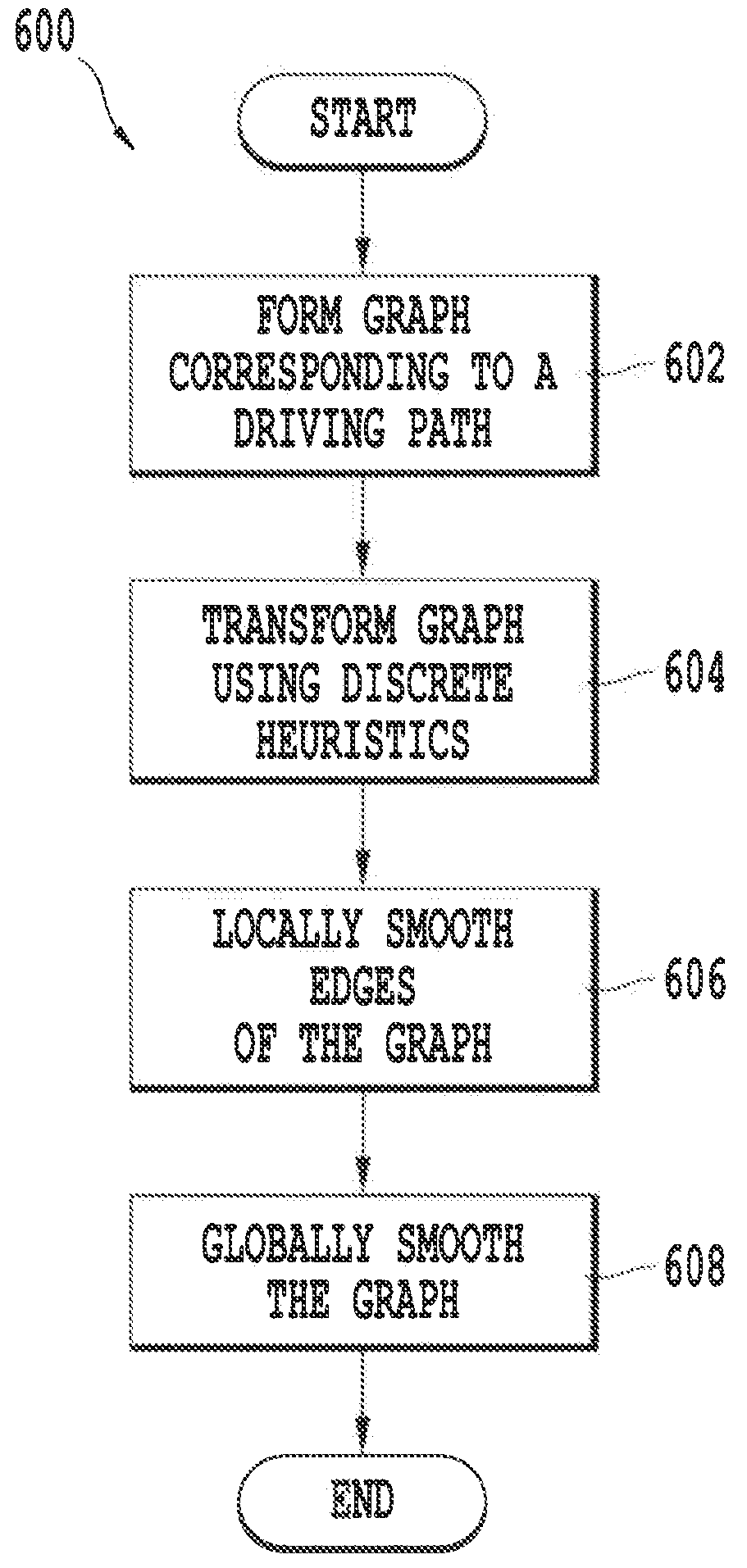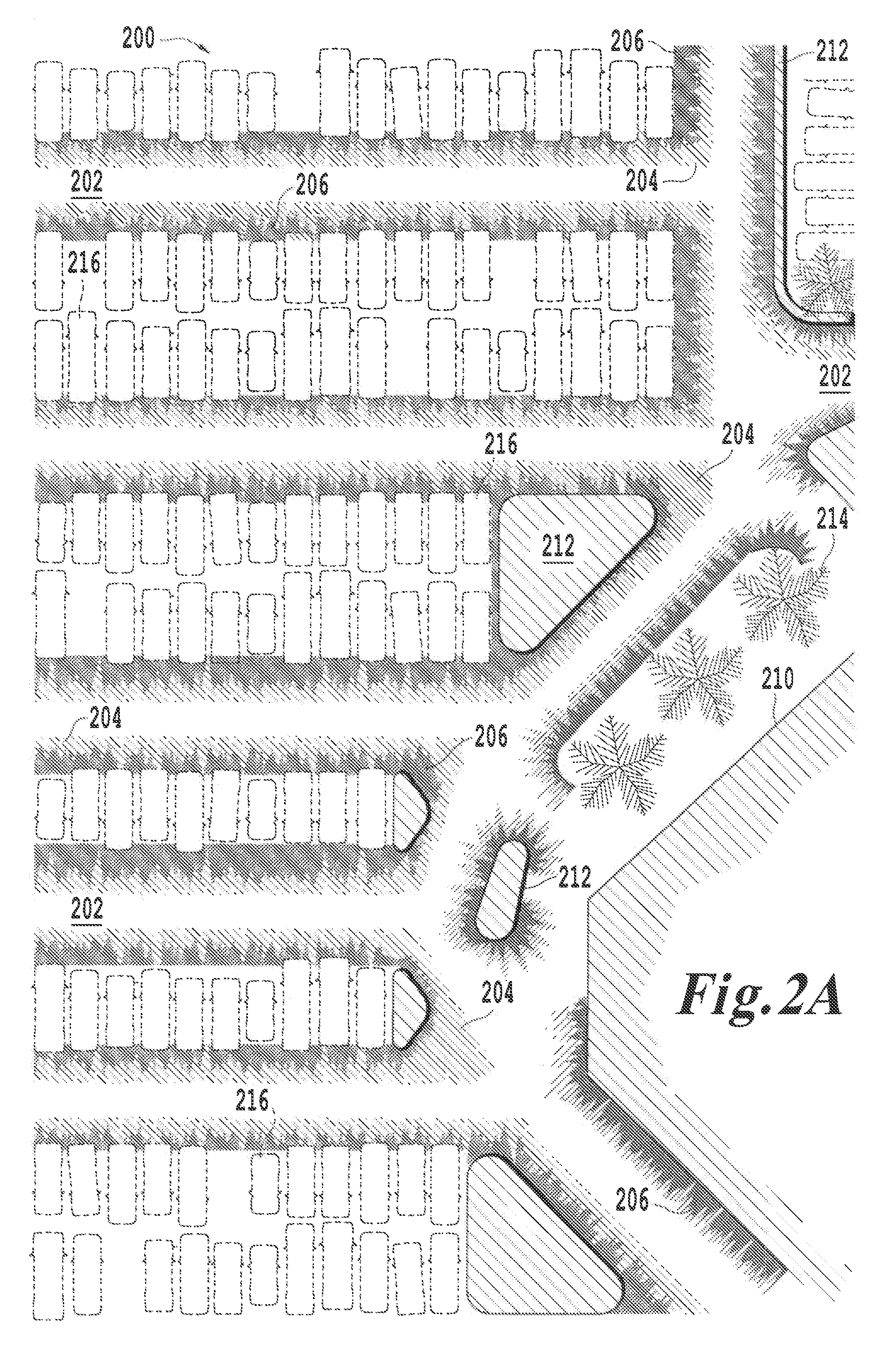Detection of topological structure from sensor data with application to autonomous driving in semi-structured environments
- Summary
- Abstract
- Description
- Claims
- Application Information
AI Technical Summary
Benefits of technology
Problems solved by technology
Method used
Image
Examples
Embodiment Construction
[0020]A problem in navigating an autonomous robot through semi-structured environments is perceptual. The robot both senses its surroundings at a low level (detecting drivable and non-drivable terrain), but also perceives the world at a higher level and infers the topological structure of the environment. An objective of this invention is to address a problem of estimating topological structure from sensor data and present an algorithm for automatically constructing lane-network graphs. FIG. 1 depicts an example of a lane-network graph 100 automatically constructed from sensor data obtained while driving through a parking lot.
[0021]In estimating a topological structure of an environment from sensor data, a grid-based map of static obstacles (such as trees 112, building structure 114 and obstacles 116) is built and then the grid-based map is used to estimate a likely corresponding graph of drivable lanes 120 and 122 (the lane network). It should be appreciated the grid-based map is a...
PUM
 Login to View More
Login to View More Abstract
Description
Claims
Application Information
 Login to View More
Login to View More - R&D
- Intellectual Property
- Life Sciences
- Materials
- Tech Scout
- Unparalleled Data Quality
- Higher Quality Content
- 60% Fewer Hallucinations
Browse by: Latest US Patents, China's latest patents, Technical Efficacy Thesaurus, Application Domain, Technology Topic, Popular Technical Reports.
© 2025 PatSnap. All rights reserved.Legal|Privacy policy|Modern Slavery Act Transparency Statement|Sitemap|About US| Contact US: help@patsnap.com



